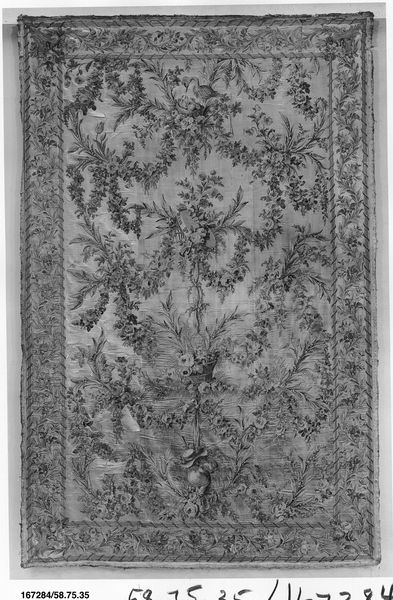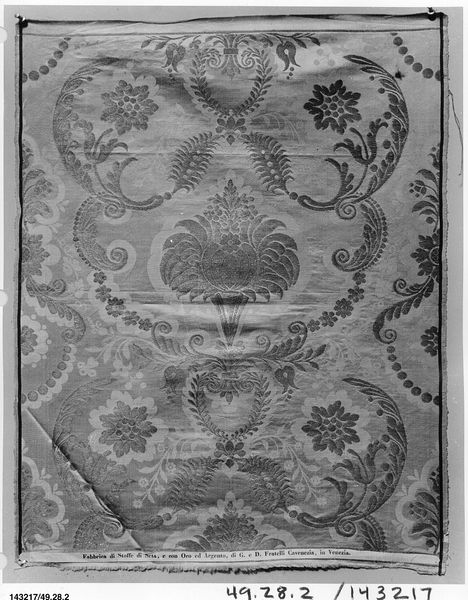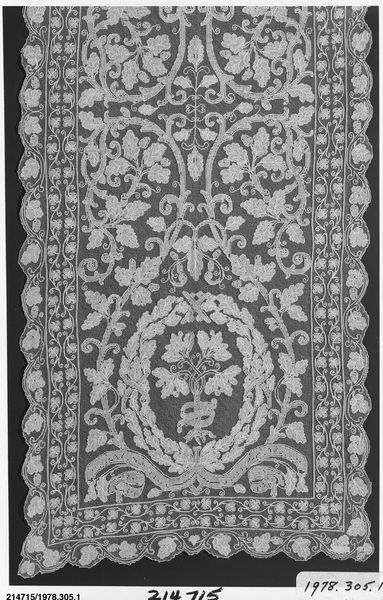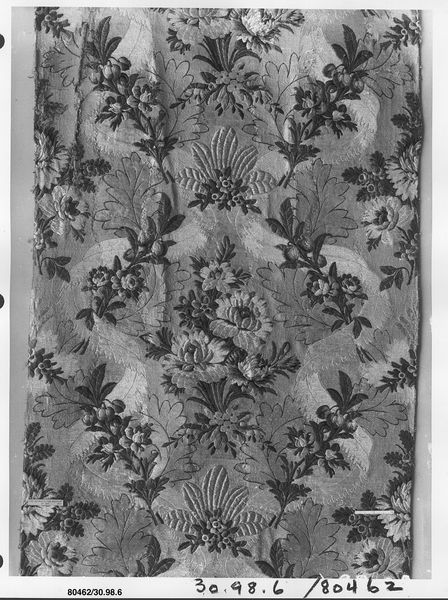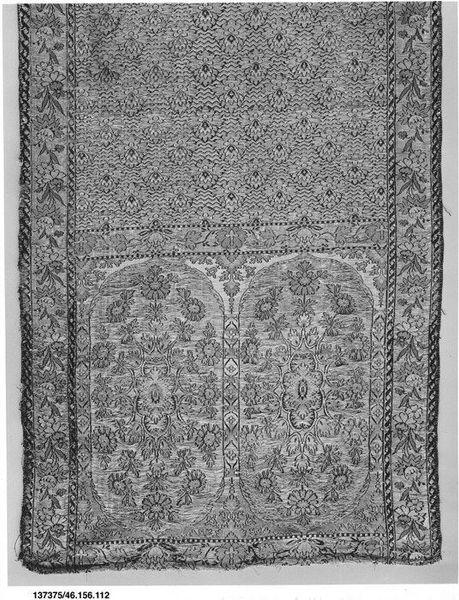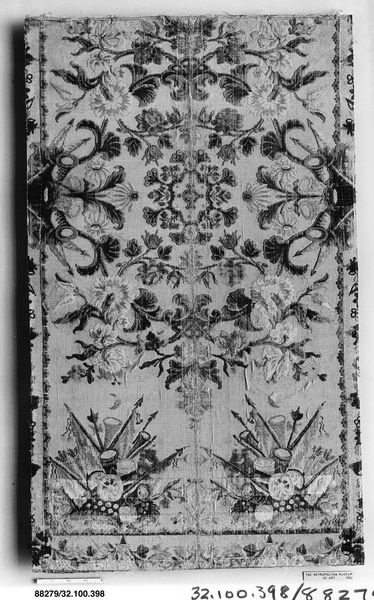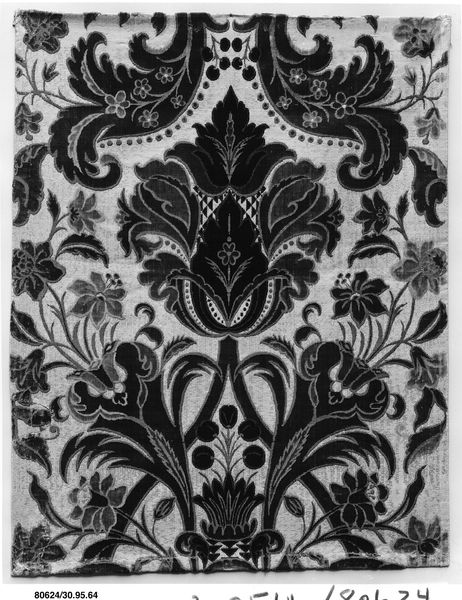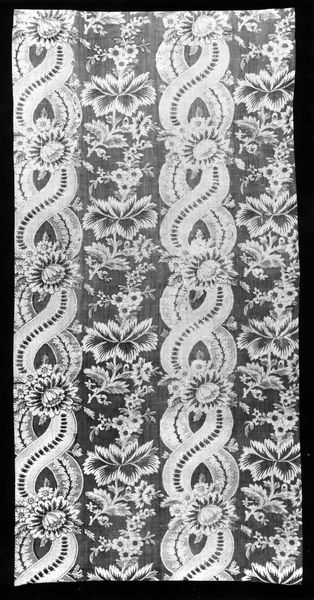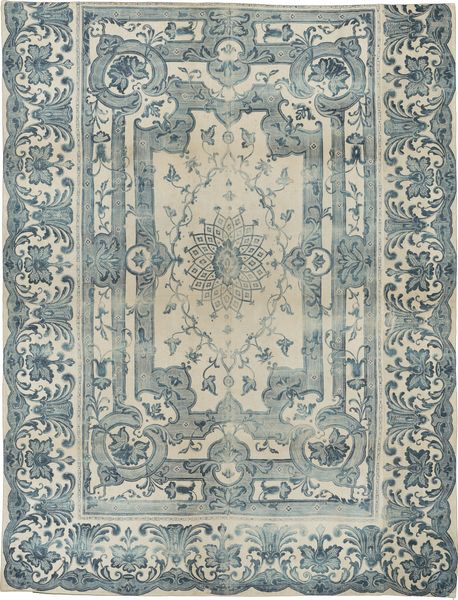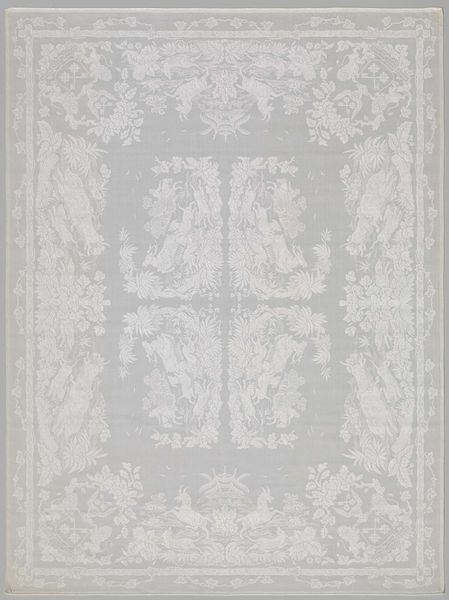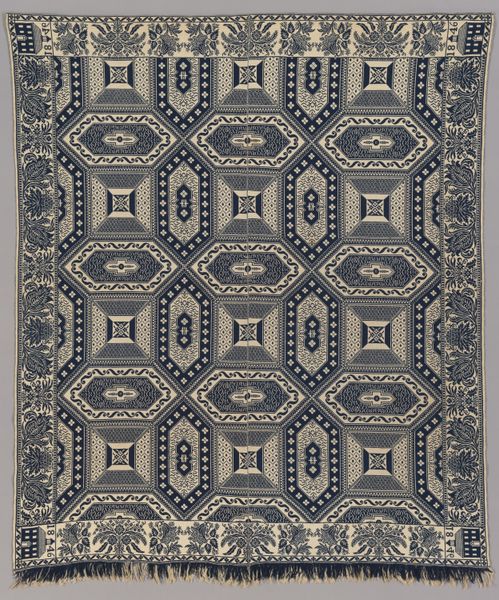
textile
#
textile
#
decorative-art
Dimensions: L. 51 1/2 x W. 25 1/4 inches (130.8 x 64.1 cm)
Copyright: Public Domain
Curator: Here we have an 18th-century textile simply titled "Piece," currently residing at the Metropolitan Museum of Art. Editor: My first thought is, what incredible detail! Even in these muted tones, you can appreciate the sheer labor involved in its creation. Curator: Absolutely. Textiles like these, especially during the Baroque period, were signifiers of wealth and status. It reflects the intricate socio-economic systems of the time. The demand for luxury items fuelled extensive trade networks. Editor: Thinking about the craft, what can you tell us about its creation? What materials might have been involved? And who made something this elaborate? Curator: Given the period, it is likely a blend of weaving and possibly some elements of guilding on the details. This level of intricacy suggests it would have been produced in a workshop, probably part of a larger guild structure where specialized artisans collaborated. The Albergo di Virtù, which might be related to the artist, suggests it could be from a charitable institution involving specialized labour. Editor: Interesting! Because looking at the patterns, especially these symmetrical floral designs, I am wondering about the techniques in relation to decorative art. Did such institutions lead the developments in new technologies for larger scale production? Curator: Yes, such shops frequently received commissions from the elites or church. Innovations in weaving technology during that era helped them achieve this complexity more efficiently and the market that arose for it. Also, these works play into larger ideological trends as European powers were investing a great deal in their textile manufacturing sector for exports. Editor: It definitely invites a deeper appreciation when considering the hands involved and the larger dynamics of wealth and craftsmanship in the 18th century. You also consider the relationship between ornamentation, technique and societal values. Curator: It really does underscore how art and textile become imbued with the social and economic values of their time. Editor: Agreed. There’s real power in recognizing the material and processes behind such refined works of decorative art.
Comments
No comments
Be the first to comment and join the conversation on the ultimate creative platform.
